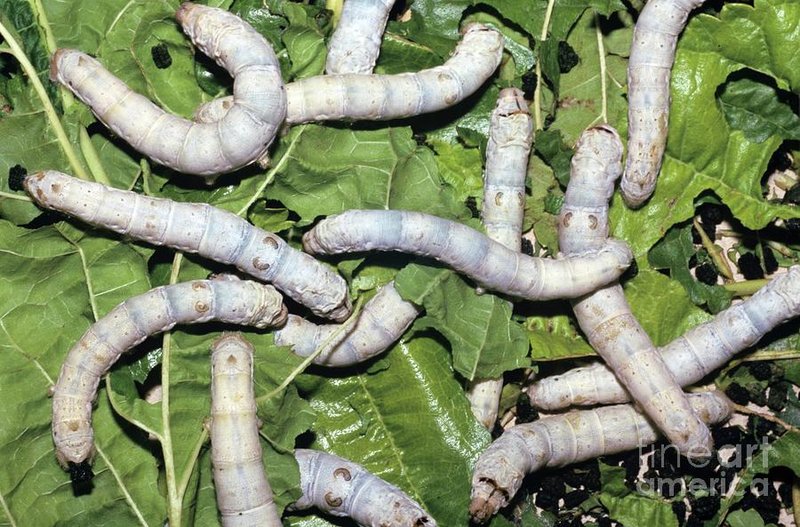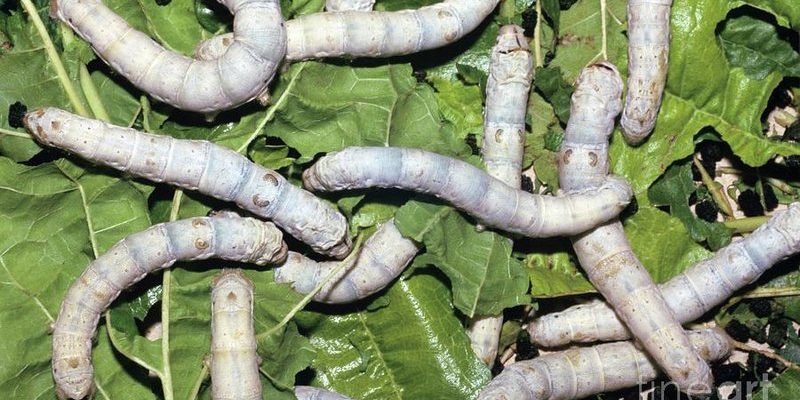
Imagine feeling overwhelmed—like when you’ve got a big project due and a sudden storm knocks out your power. That’s a little bit like what silkworms go through in their own world. They possess unique ways to cope with these stressors, and understanding their reactions can give us fascinating insights into resilience in nature. Let’s dive into how silkworms respond to these conditions, and what we can learn from their behavior.
Understanding Environmental Stress for Silkworms
Environmental stress refers to any change in the natural surroundings that can negatively impact an organism’s health or behavior. For silkworms, this can include fluctuations in temperature, changes in humidity, lack of food, or even overcrowding.
Temperature fluctuations are crucial for silkworms because they thrive in specific ranges. Ideal temperatures for silkworms typically range from 25°C to 30°C (77°F to 86°F). When temperatures drop or rise significantly beyond this range, silkworms can experience stress. They might reduce their feeding or stop spinning altogether. Think of it like trying to work in a room that’s either too cold or too hot; it’s tough to focus, right?
Humidity plays a vital role too. Silkworms require around 70-80% humidity to thrive. If the environment becomes too dry, they may suffer from dehydration, leading to stunted growth or even death. Conversely, excessive humidity can lead to fungal infections or mold growth in their habitat, which can be equally harmful. So you see, these little guys are like us in many ways—they need just the right conditions to be happy and healthy!
Behavioral Changes Under Stress
When faced with environmental stress, silkworms exhibit various behavioral changes. One of the most noticeable changes is their feeding habits. Under stress, you might find them eating less or even refusing food altogether. This conserves energy for survival, much like how we might skip a meal during stressful times.
Increased mortality rates can also occur when silkworms are stressed. If their environment becomes too hostile, it can lead to a decline in their overall health and potentially their life cycle. It’s a harsh reality, but it highlights the importance of a suitable ecosystem for their survival.
Another interesting behavioral change is the increase in cocoon-spinning activity. When stressed, some silkworms may spin their cocoons earlier than usual. It’s like hitting the “pause” button on life to protect themselves. By retreating into a cocoon, they create a safe space where they can weather the storm, both literally and metaphorically.
Physiological Responses to Stress
Silkworms don’t just react behaviorally; they also undergo physiological changes when faced with environmental stress. For instance, they tend to release stress hormones, similar to how our bodies react during stressful situations. These hormones can trigger a variety of responses, including changes in metabolism and immune function.
Immune responses are particularly fascinating. When stressed, silkworms ramp up their immune system’s activity. This helps them combat infections that might arise due to the weakened state caused by stress. It’s like when we catch colds during high-stress times; our immune systems have to work harder to keep us safe from harm.
Moreover, silkworms can also adapt by altering their developmental processes. Under stress, they can change the timing of their life stages, like shifting from larva to pupa earlier or later. This flexibility is essential for their survival in fluctuating environments. They effectively become little survival experts, adjusting their life cycle to match what’s happening around them.
The Role of Nutrition in Stress Management
Nutrition plays a vital role in how well silkworms can cope with stress. Their primary diet consists of mulberry leaves, which provide essential nutrients for growth and development. Well-nourished silkworms are better equipped to handle stressors compared to those lacking proper nutrition.
When facing environmental stress, silkworms need a balanced diet rich in vitamins and minerals. This helps bolster their immune system and overall resilience. A strong diet can be likened to a good defense team—we can better tackle challenges when we’re well-fed and nourished.
Interestingly, studies have shown that supplementing their diet with certain nutrients can enhance their ability to withstand stress. For example, adding *vitamin C* can improve their resistance to disease and strengthen their immune response. It’s fascinating how something as simple as the right food can make such a significant difference!
Impact of Climate Change on Silkworms
With global climate change, silkworms face new challenges. Temperature and humidity extremes are becoming more common, which can be detrimental to their health and silk production. You might be wondering how these changes affect their survival.
As temperatures rise, silkworms may struggle to find suitable habitats. Higher temperatures can adversely affect their growth rate and reproduction. Imagine a local café that suddenly doesn’t have air conditioning during a heatwave; everyone would be unhappy and unproductive, right?
Additionally, erratic weather patterns can disrupt the availability of mulberry leaves, which are critical to their diet. If silkworms lack access to food, their ability to cope with stress diminishes significantly. This highlights the need for sustainable practices in agriculture to ensure a stable environment for these remarkable insects.
Silkworms are often overlooked, but their reactions to environmental stress offer valuable lessons about resilience and adaptation. They remind us that even the smallest creatures have their own challenges and methods for coping. By understanding how silkworms react to stress—through behavioral changes, physiological adaptations, and nutritional needs—we can gain insights that apply not only to nature but also to our own lives.
Honestly, when we think about our environments and the stresses we face, there’s much we can learn from these delicate insects. Whether it’s adapting to changes or ensuring we have the right support systems, there’s beauty in resilience. So next time you see a silkworm, think of the silent struggles it faces, and appreciate the complex world it navigates.

